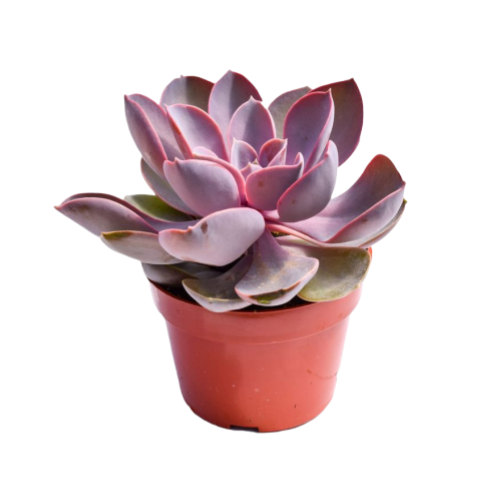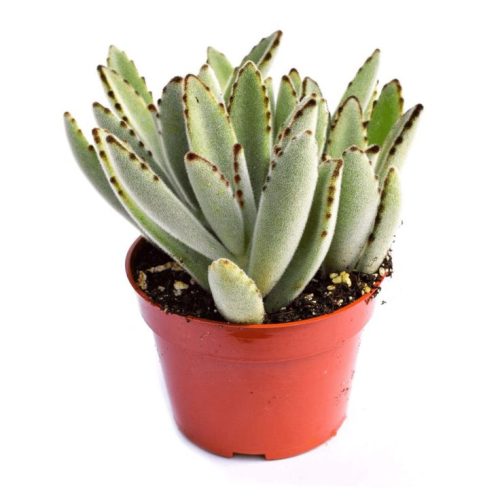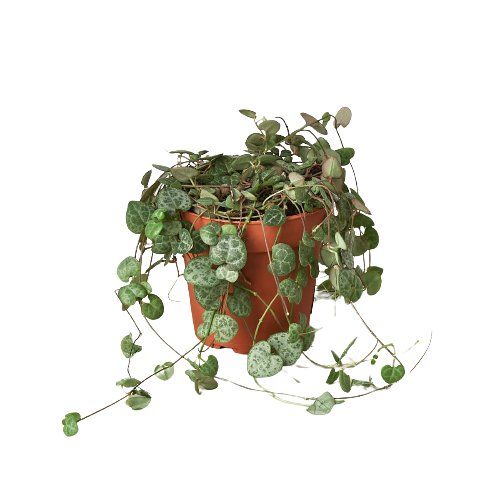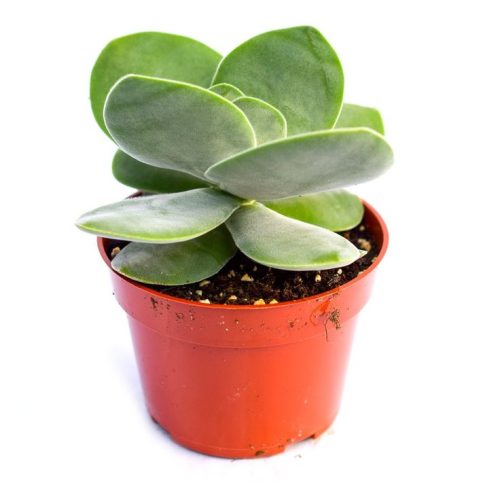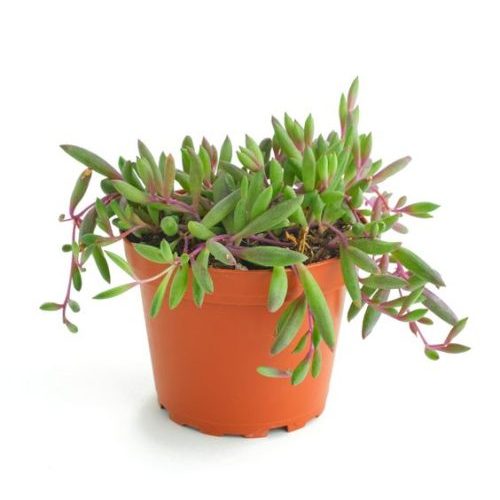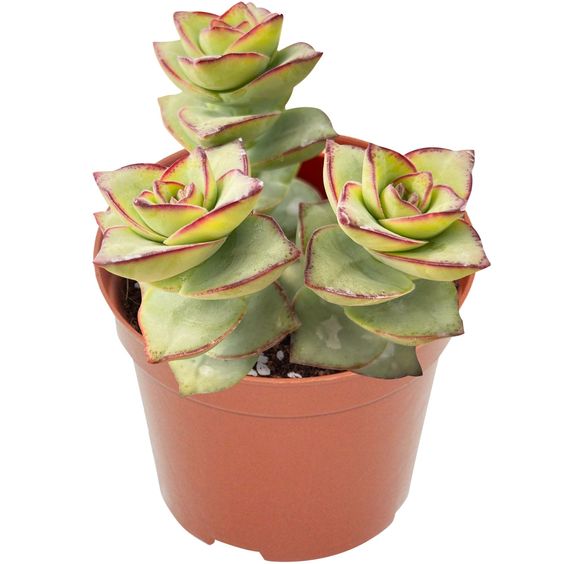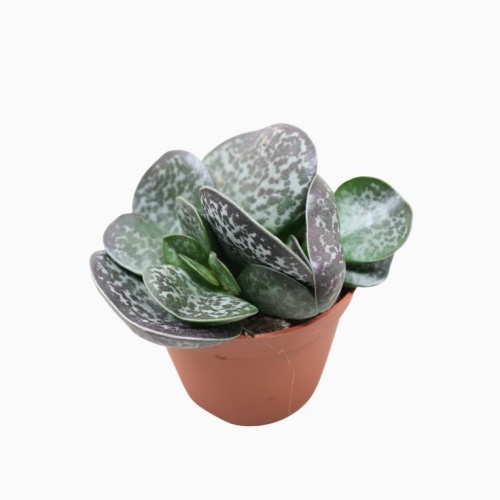Echerkia pambuyo
Kulemeletsa
Mafotokozedwe Akatundu
Echeveria Afterglow: The “Sunset Goddess” of Succulents, Beauty Beyond Compare!
Zovala zokongola za mbewu
Echeveria Afterglow (also known as “Sunset Glow”) stands out with its unique colors and elegant posture. The leaves are arranged in a rosette pattern, broad and spoon-shaped, with slightly wavy edges. They are covered with a thin layer of powder, transitioning from blue-green to purple-pink. When exposed to ample sunlight, the leaf edges turn a bright pink, resembling a stunning sunset. The plant has a compact form, with a height of about 15-20 cm and a diameter that can reach up to 30 cm. It blooms from spring to summer, with flower stalks emerging from the center, topped with bell-shaped flowers in shades of orange-red or pink, creating a striking contrast with the leaves and adding a touch of liveliness to the entire plant.
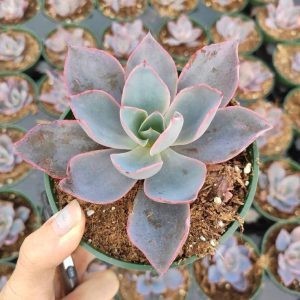
Echerkia pambuyo
Kukula kwa ekevera pambuyo
Echeveria Afterglow thrives in environments with plenty of sunlight, requiring at least six hours of direct sunlight daily. Insufficient light can cause the plant to stretch and lose its vibrant colors. It grows best in temperatures ranging from 15-25°C, tolerating heat but not cold. During winter, it should be kept above 5°C to avoid frost damage. The soil should be well-draining, preferably a mix of succulent-specific soil and porous materials like perlite or vermiculite to enhance aeration. Watering should follow the “soak and dry” principle, reducing frequency in summer and keeping the soil slightly dry in winter to prevent root rot. Fertilize with a diluted succulent-specific fertilizer once a month during the growing season, and stop fertilizing in winter.
Ntchito ndi Zovuta za ECHEPOWIA
ECHEPARIA itatha sikuti zokongoletsera kwambiri komanso zokongoletsera zokomera komanso zopangira. Monga zokongoletsera zakunja, ndizabwino pawindo, ma desiki, kapena makonde, ndikuwonjezera mkhalidwe wofewa komanso wachikondi wokhala ndi khungu lake lofiirira. M'malo ophatikizira, ikuluawiri ndi ma subculents ena ngati sedim kapena echermea, ndikupanga dimba lowoneka bwino komanso lokongola. Ingotsimikizani kusankha mbewu zofananira. Itha kugwiritsidwanso ntchito m'minda yamiyala, makoma abwino, kapena obzalidwa m'mabwalo, pomwe amakongoletsa mabasiri, makamaka pansi pa dzuwa, ofanana ndi kutuluka kwa dzuwa. Chifukwa cha mawonekedwe ake apadera komanso chisamaliro chosavuta, ECHEPARIA itathanso mphatso yabwino kwambiri yokopa kapena kuwonekera kwa omwe alimidwe, akumalumikizana ndi chilengedwe.
Malangizo okonzanso mfundo za ECHEPOWIA
Kuonetsetsa kukula kwabwino komanso kukopeka kwa Echerkia pambuyo, there are a few key points to keep in mind. First, watering is crucial. Echeveria Afterglow is drought-tolerant, so follow the “water only when dry, and water thoroughly” rule. Reduce watering frequency during the hot summer and cold winter when the plant grows slowly or goes dormant. Avoid watering directly onto the leaf center to prevent rot. Second, summer is a critical period for Echeveria Afterglow. When temperatures exceed 35°C, the plant may enter dormancy. Enhance ventilation and cooling measures, such as using fans or air conditioning, to lower the ambient temperature. Also, provide some shade to protect the leaves from scorching. Lastly, regularly clean the leaf surfaces to remove dust. The thin layer of powder on Echeveria Afterglow’s leaves not only enhances its beauty but also helps prevent pests and diseases. If you spot withered leaves or signs of pests, trim the affected parts and use disinfected tools to avoid spreading infections.
Chidule cha ECHEPARIA
ECHEPERIA itatha. Ndiwosintha kwambiri komanso kosavuta kusamalira, ndikusankha bwino zokongoletsera zamkati, mundawo nthaka, ndi kupatsa mphatso. Kusintha kwa masamba kuchokera ku Blue-Green kukhala kofiirira-pinki, wolumikizidwa ndi maluwa ofiira a lalanje, ndikupanga mawonekedwe okongoletsa kwambiri. M'nyumba, zimawonjezera kukhudza kofewa, wachikondi ku Windows, ma desiki, kapena makonde. M'mundamo, tsango la ECHEPARIA pambuyo pa dzuwa likuwoneka ngati kutuluka kwa dzuwa, kugwirira ntchito. Chifukwa cha mawonekedwe ake apadera komanso chilengedwe chotsika kwambiri, ndi mphatso yabwino kwambiri yokopa kapena oyambitsa kulima.





